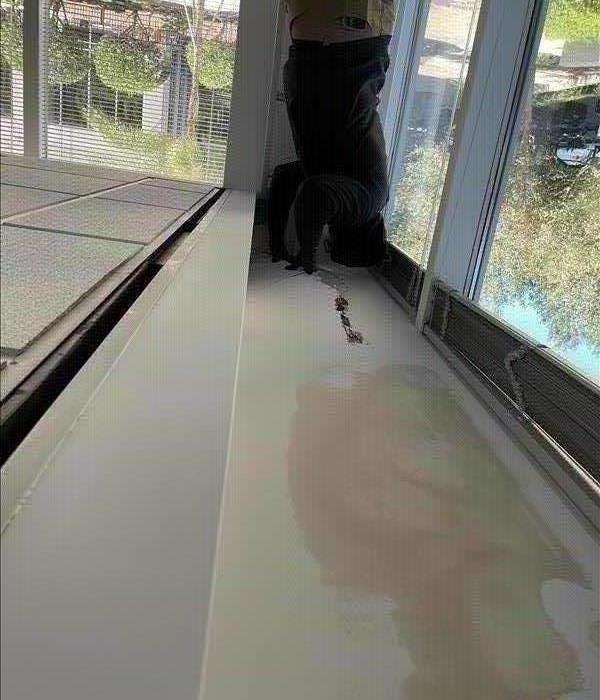Enhancing Mold Prevention: Exploring Mold-Resistant Building Materials and Techniques
7/17/2024 (Permalink)
Preventing mold growth in buildings is crucial for maintaining indoor air quality and protecting the structural integrity of the property. Mold-resistant building materials and construction techniques play a vital role in mitigating mold infestations and creating healthier living environments. In this blog post, we'll delve into the realm of mold-resistant building materials and techniques, exploring their benefits and applications in construction projects.
Understanding Mold-Resistant Building Materials
Moisture-Resistant Drywall:
Moisture-resistant drywall, also known as green board or blue board, is specially designed to resist moisture and mold growth. It features a water-resistant gypsum core and a moisture-resistant face that helps prevent mold proliferation in areas prone to high humidity, such as bathrooms, kitchens, and basements.
Mold-Resistant Paints and Coatings:
Mold-resistant paints and coatings contain additives that inhibit mold growth on surfaces. These products are available for both interior and exterior applications and can be applied to walls, ceilings, trim, and other surfaces susceptible to mold infestations. Mold-resistant paints and coatings help maintain a clean and mold-free environment while enhancing the durability and longevity of painted surfaces.
Mold-Resistant Flooring:
Certain types of flooring materials are inherently resistant to mold and moisture, making them ideal choices for areas prone to water exposure. Examples include ceramic tile, porcelain tile, vinyl plank flooring, and concrete flooring. These materials are non-porous and easy to clean, making them less susceptible to mold growth than organic materials like carpet and wood.
Implementing Mold-Resistant Construction Techniques
Proper Drainage and Waterproofing:
Proper drainage and waterproofing are essential for preventing moisture intrusion into buildings. Implementing effective drainage systems, such as French drains, gutters, and downspouts, helps redirect rainwater away from the foundation and exterior walls, reducing the risk of water penetration and mold growth.
Ventilation and Air Circulation:
Proper ventilation and air circulation are critical for maintaining optimal indoor air quality and controlling humidity levels. Installing exhaust fans in bathrooms, kitchens, and laundry rooms helps remove excess moisture from the air, while strategically placed windows and vents promote airflow and prevent condensation buildup.
Vapor Barriers and Moisture Control Measures:
Vapor barriers and moisture control measures help prevent moisture from seeping into building materials and causing mold growth. Installing vapor barriers, such as polyethylene sheets or vapor-retardant paints, in wall cavities and crawl spaces helps block moisture transmission and protect against mold infestations.
Advantages of Mold-Resistant Building Materials and Techniques
Long-Term Durability and Maintenance:
Mold-resistant building materials are often more durable and resistant to water damage than traditional materials. By incorporating these materials into construction projects, property owners can enjoy reduced maintenance costs and prolonged lifespan of building components.
Enhanced Property Value:
Properties constructed with mold-resistant building materials and techniques are perceived as more desirable and valuable in the real estate market. Mold prevention measures demonstrate a commitment to quality construction and maintenance, which can attract potential buyers and command higher resale prices.
Mold-resistant building materials and techniques are essential components of modern construction practices, offering numerous benefits for property owners and occupants alike. By incorporating moisture-resistant drywall, mold-resistant paints and coatings, and other mold prevention measures into construction projects, builders and homeowners can create healthier, more durable, and more valuable properties. If you're considering a construction or renovation project and want to incorporate mold-resistant materials and techniques, consult with a reputable restoration company like SERVPRO® for expert guidance and assistance.





 24/7 Emergency Service
24/7 Emergency Service
